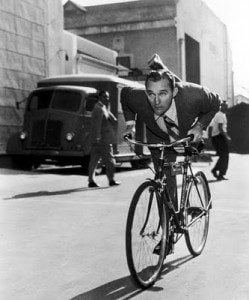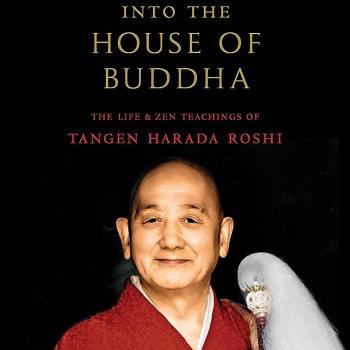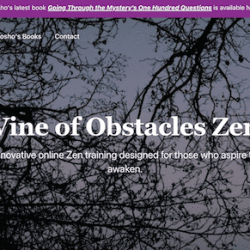 The fine Buddhist scholar Dale Wright (see Philosophical Meditations on Zen Buddhism, for example) gave a fine talk at the recent bi-annual meeting of the Soto Zen Buddhist Association about the virtues of Zen practice and his concerns about where this boat is going.
The fine Buddhist scholar Dale Wright (see Philosophical Meditations on Zen Buddhism, for example) gave a fine talk at the recent bi-annual meeting of the Soto Zen Buddhist Association about the virtues of Zen practice and his concerns about where this boat is going.
I wasn’t at the meeting but listened to the mp3 of his talk available for members only, unfortunately, at the SZBA site.
Grace Schireson’s blog posts at Sweeping Zen first alerted me to the talk, paraphrasing Wright, “Zen is like a Maserati, Part 1: Sleek, Beautiful, Expensive, and High Maintenance.”
In Wright’s words, “…Zen is like the Maserati of religions. It’s gorgeous, it’s sleek, it’s simple, nothing unnecessary, and it’s really costly. And I love it.”
The simile that Zen is like a Maserati is a central pillar of the Zen myth with the Zen practitioner being a spiritual hero, bravely going where few have gone before, sitting through the years as if her/his hair were on fire. Dogen is the patron saint of this aspect of the myth, turning to the mountains and his hermitage, blazing brilliant dharma from his far-from-the-capitol hide out.
The other pillar is that Zen is for everyone. Another talk from the SZBA meeting was by Duncan Williams, author of The Other Side of Zen. Williams mentions that in 1750 there were 17,000 Soto temples in Japan and that in only 1% did they offer zazen. So what were they doing? Attending to the everyday needs of the people, just like churches do everywhere. Keizan, the third ancestor of Soto Zen in Japan, carries the mantle of this pillar in the mythology.
As Zen wanders it’s way into the global culture, it is important that we hold these two pillars – or foci – gently in our hearts and let the conversation between them open the way for us here.
I often bitch that the second pillar is what we’re moving toward exclusively. This is dangerous because the heart of the matter, the heart of what Zen has to offer, may be sacrificed in this uni-pillar approach. It would also be unbalanced just to go with the first pillar, ignore the community and the suffering of the many beings.
And our culture seems to have a really hard time having an open conversation about pluralism and elitism. We seem to bull shit ourselves about how pluralistic we are while the political and economic elites get a bigger and bigger share of the goodies. We have the opportunity here to lead the culture toward a dynamic, ongoing resolution of this issue. How we work it – Maserati or Schwin (both and neither) – might have great influence in the future.
Wright’s talk, as I said, is mostly about what he sees as virtues and areas of concern of Soto Zen in the present. Listening to the virtues, I felt better about Zen then I have for a long time.
Here’s the list (some of these are my paraphrase, most are Schireson’s) of the virtues: The practices of this tradition yield a long list of ingredients of human character. Zen is about actual practice. Zen Mind is not localized to a specific cognitive skill or a specific area of development. Zen is about the here and now. Belief not required. Zen does not conflict with science. Freedom. A Sense of Humor and Fun. Going beyond your teacher. Zen’s aesthetic sensibility as an expression of practice. Zen’s vision is expressed through literary tradition.
Challenges: Morality Matters. Politics Matter. The Intellect Matters. Working with the mystery of Enlightenment. Integrating the vertical and horizontal aspects of Zen (teacher and community) and integrating innovation with tradition.
See Schireson’s commentary at the Sweeping Zen site for the gist of Wright’s talk.
I find the ideas here really compelling. For example, in Wright’s discussion of “The intellect matters,” he references the college students he works with and their hunger for a compelling life vision and challenges the teachers in the audience to speak more clearly to this hunger.
What is a Zen life and what does it have to offer?
“Empty, no holy,” of course, but what are the dynamic contents of that empty?
More on that next week.











